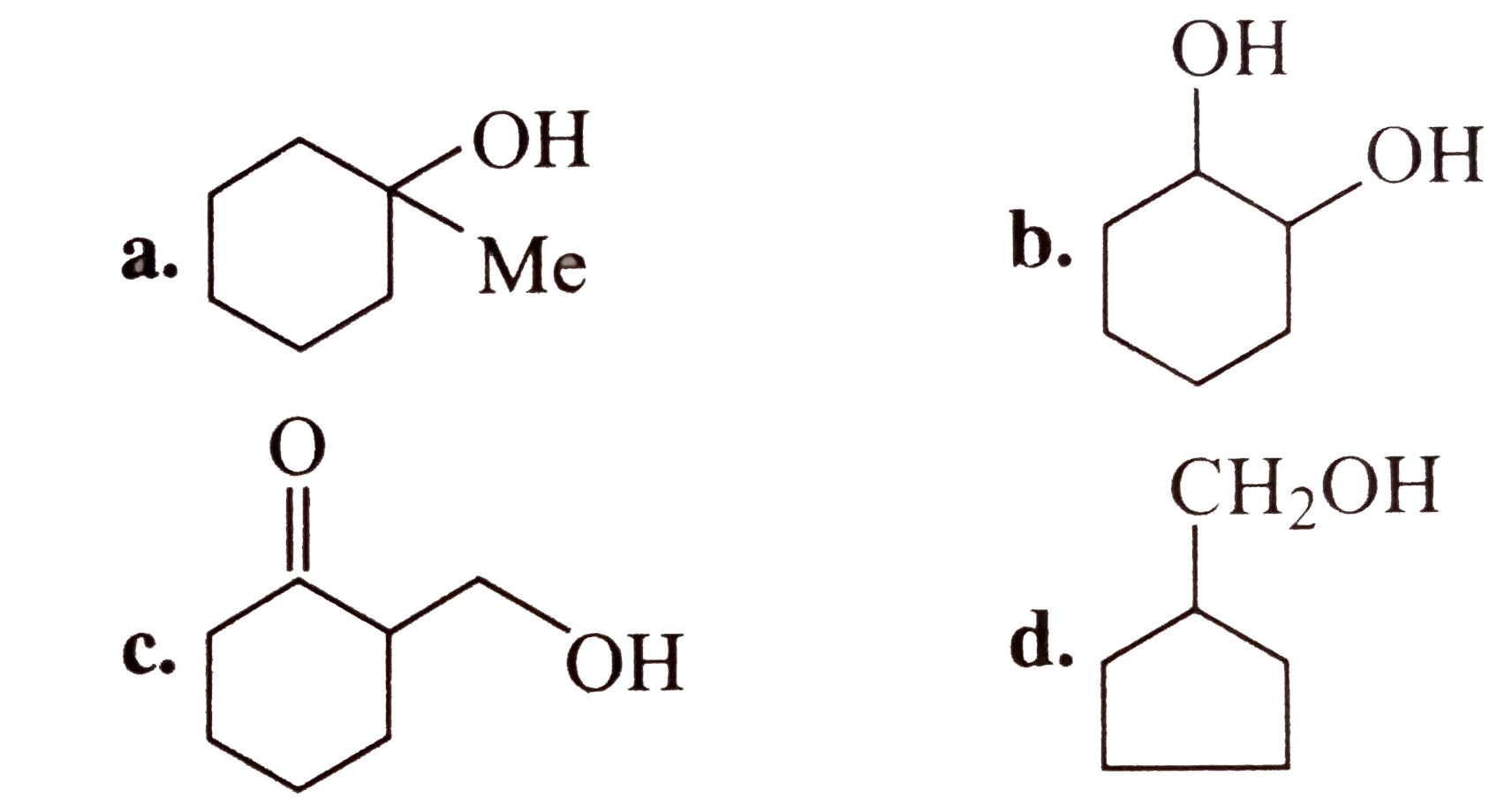Describe the mechanism of dehydration of an alcohol in the presence of H2SO4
To describe the mechanism of dehydration of an alcohol in the presence of concentrated sulfuric acid (H₂SO₄), we can break it down into several steps:
Step 1: Protonation of the Alcohol
When an alcohol (for example, ethanol, CH₃CH₂OH) is treated with concentrated sulfuric acid, the first step is the protonation of the alcohol. The sulfuric acid donates a proton (H⁺) to the oxygen atom of the alcohol, forming an oxonium ion.
Reaction:
CH3CH2OH+H2SO4→CH3CH2OH+2
Step 2: Formation of a Carbocation
Upon heating, the protonated alcohol (oxonium ion) undergoes a loss of water (H₂O). This step is crucial as it leads to the formation of a carbocation. The bond between the carbon and the hydroxyl group breaks, resulting in a positively charged carbon atom.
Reaction:
CH3CH2OH+2→CH3CH++H2O
Step 3: Deprotonation to Form Alkene
The carbocation formed in the previous step is then deprotonated by a base (which could be the bisulfate ion, HSO₄⁻, from sulfuric acid). This step involves the removal of a proton from the adjacent carbon, leading to the formation of a double bond (alkene).
Reaction:
CH3CH+→CH2=CH2+H+
Final Product
The final product of this dehydration reaction is ethene (CH₂=CH₂), which is an alkene.
Summary of the Mechanism
1. Protonation of Alcohol: Alcohol is protonated by H₂SO₄ to form an oxonium ion.
2. Formation of Carbocation: The oxonium ion loses a water molecule, forming a carbocation.
3. Deprotonation: The carbocation is deprotonated to form an alkene.
When an alcohol (for example, ethanol, CH₃CH₂OH) is treated with concentrated sulfuric acid, the first step is the protonation of the alcohol. The sulfuric acid donates a proton (H⁺) to the oxygen atom of the alcohol, forming an oxonium ion.
CH3CH2OH+H2SO4→CH3CH2OH+2
Upon heating, the protonated alcohol (oxonium ion) undergoes a loss of water (H₂O). This step is crucial as it leads to the formation of a carbocation. The bond between the carbon and the hydroxyl group breaks, resulting in a positively charged carbon atom.
CH3CH2OH+2→CH3CH++H2O
The carbocation formed in the previous step is then deprotonated by a base (which could be the bisulfate ion, HSO₄⁻, from sulfuric acid). This step involves the removal of a proton from the adjacent carbon, leading to the formation of a double bond (alkene).
CH3CH+→CH2=CH2+H+
The final product of this dehydration reaction is ethene (CH₂=CH₂), which is an alkene.
1. Protonation of Alcohol: Alcohol is protonated by H₂SO₄ to form an oxonium ion.
2. Formation of Carbocation: The oxonium ion loses a water molecule, forming a carbocation.
3. Deprotonation: The carbocation is deprotonated to form an alkene.
Topper's Solved these Questions
- HYDROCARBONS Book:ICSEChapter:HYDROCARBONS Exercise:ESSAY (LONG ANSWER) TYPE QUESTIONS
Explore 28 Videos
- HYDROCARBONS Book:ICSEChapter:HYDROCARBONS Exercise:OBJECTIVE (MULTIPLE CHOICE) TYPE QUESTIONS
Explore 71 Videos
- HYDROCARBONS Book:ICSEChapter:HYDROCARBONS Exercise:VERY SHORT ANSWER TYEP QUESTIONS
Explore 47 Videos
- EQUILIBRIUM Book:ICSEChapter:EQUILIBRIUM Exercise:NCERT TEXT-BOOK EXERCISE
Explore 109 Videos
- HYDROGENBook:ICSEChapter:HYDROGENExercise:NCERT TEXT-BOOK EXERCISE (With Hints and Solutions)
Explore 53 Videos
Similar Questions
Write the mechanism of dehydration of ethanol.
View SolutionThe reagent used for the dehydration of an alcohol is
View SolutionWrite the mechanism of acid dehydration of ethanol to yield ethene.
View SolutionDescribe the mechanism of the formation of diethyl ether from ethanol in the presence of concentrated sulfuric acid.
View SolutionDehydration of ethylene glycol in presence of concentration H2SO4 will give
View SolutionAddition of water to ethyne in the presence of H2SO4 and HgSO_4 gives
View SolutionThe dehydration of alcohols in the presence of conc. H2SO4 at 170∘C involves one of the following :
View SolutionDecomposition of oxalic acid in the presence of conc H−2SO4 gives :
View SolutionWrite chemical equations of the reactions of ethanoic acid with Ethanol in the presence of conc. H2SO4
View SolutionIdentify the products of dehydration of following alcohols.

View Solution
